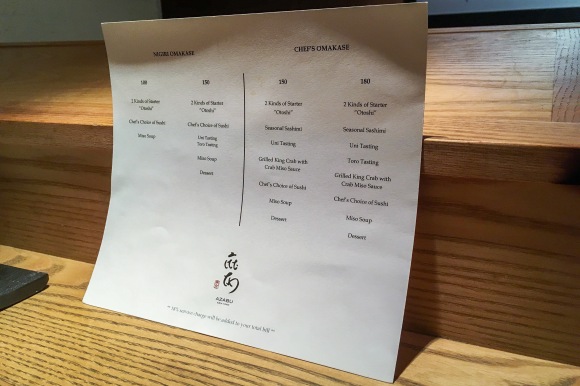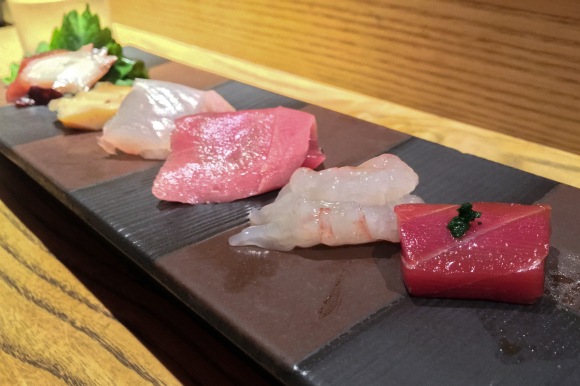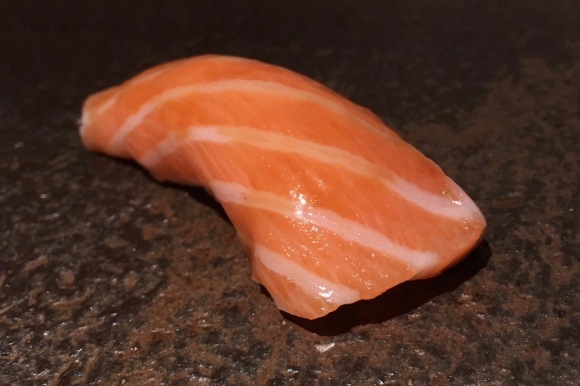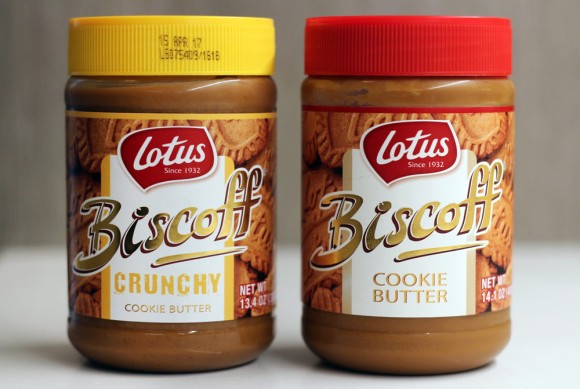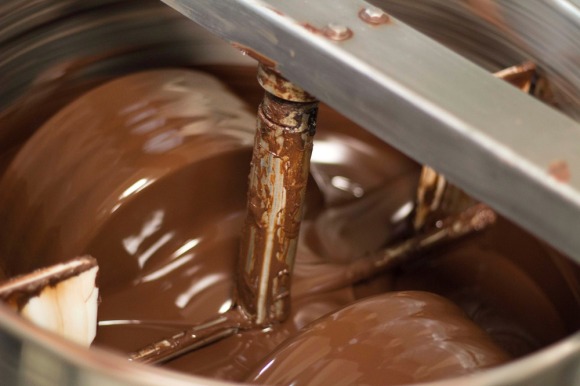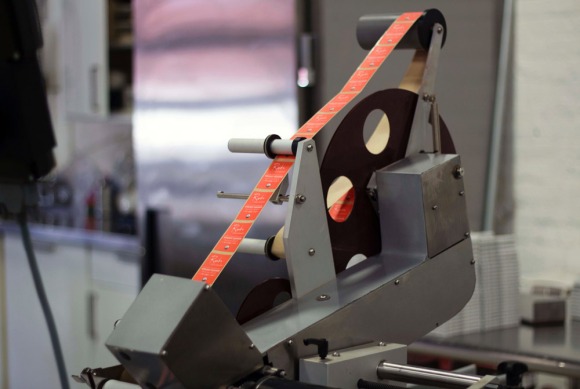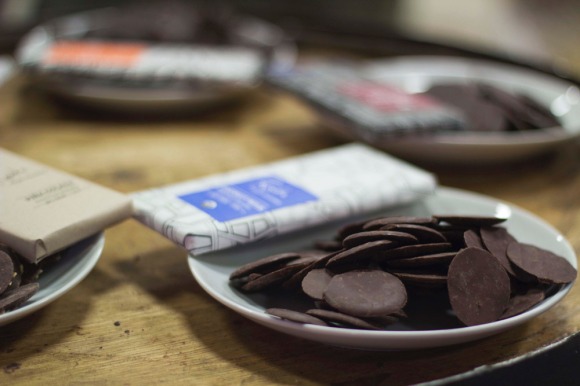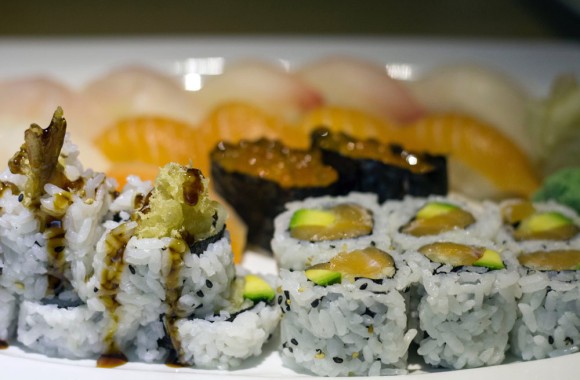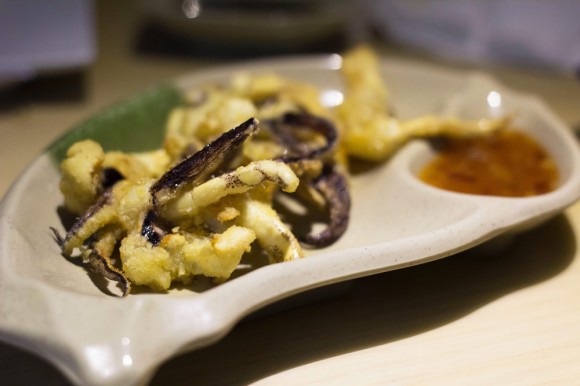
It’s not often I get to eat like I ate at Sushi Azabu. For one, this restaurant is well out of my price range. To me, an expensive meal is any one that threatens to hit the $30 mark, and with omakase is priced at $100, $150, or $180 per person, Azabu is far past the point of threatening. Don’t get me wrong; I can definitely appreciate a high-quality meal. I’m not one to immediately cry “overpriced!” at anything that veers toward costliness. It’s just that I can’t afford to eat this way unless someone else is footing the bill (thanks, Dad).
A few months ago, in a fit of bitterness, I went through the menus of every single one of this city’s Michelin-starred restaurants, mostly in an attempt to prove to myself that fine dining can be nut-free. I had very little success—I ended up eliminating nearly every single restaurant before even reaching my call-and-double-check stage—but one of the few restaurants that made it through was Sushi Azabu, a one-star sushi bar on the edge of Tribeca.
Their menu looks nut-less, but there’s plenty of room for nuts to sneak in under listings like “2 kinds of starter” or “dessert,” so I called to double-check. The hostess, who was very friendly and very competent, explained that while there are no nuts currently used in Azabu’s food, there are nuts stored in their kitchen. She assured me that the nuts aren’t really handled, though, and that I didn’t really have much reason to worry, especially if I was planning on eating from the sushi bar. (Of course, I’d recommend double-checking on the whole nut situation before eating at Azabu, because I’m sure it’s subject to change.)
When Sam and I got there, the hostess confirmed that I was the one with the nut allergy—I hadn’t even had to remind her. She led us to the end of the sushi bar, took our orders, and then asked if we had any special requests beyond the whole no-nuts thing before relaying all the relevant information (in Japanese) to the sushi chef. Truly, I felt taken care of—she was just as helpful in the restaurant as she had been on the phone, and if I’d had any worries beforehand, they were gone by the time she and I were done speaking.
[By the way, Azabu is a very small and very quiet restaurant. Only an (a) jackass or (b) Actual Important Restaurant Critic™ would be comfortable subjecting the other diners to a shutter sound over and over and over and over, and (I hope) I’m neither, so I left my camera at home. The photo at the top of this post, though I wish it were mine, is from The Greenwich Hotel’s website. I’ve included a few of my own iPhone photos at the end of this post, but those are all I have. Find a few better ones here and here.]
Anyway, food. Sam and I ordered the less expensive of the two Chef’s Omakase options. For $150, we each got got two starters, an assortment of seasonal sashimi, an uni tasting, a grilled crab dish, an assortment of sushi, miso soup, and dessert. (At $180, the other Chef’s Omakase also includes a toro tasting.)
First came the starters: fluke topped with uni, and a piece of Japanese eggplant topped with seared fatty tuna. Both were great, but I particularly liked the tuna, because…well, it was seared fatty tuna. Do I really need to explain? The eggplant was a little too slimy for me, but I appreciated its flavor nonetheless, and it did go well with the tuna, so I couldn’t really complain. And the fluke and uni were both great—I’m a sucker for any (decent) uni, really, but that serving was particularly tasty, and I couldn’t wait for the rest that’d be coming my way.
Next was the sashimi: octopus, abalone, fluke, medium fatty tuna, sweet shrimp, and lean tuna. Both pieces of tuna were straight-up delicious; the fatty tuna melted in my mouth, as fatty tuna does, and the lean tuna, topped with a speck of scallion, was one of the best pieces of lean tuna I’ve ever eaten. Seriously: That thing blew me away, and if my eyes had been closed, I wouldn’t have known it was lean. I liked the sweet shrimp, too—it didn’t have any of that that sea flavor that I so hate—but the octopus was a little boring, and the abalone was way too tough and clammy (that’s clam-flavored, not damp) for me.
After the sashimi came the uni tasting, which I’d been looking forward to since the very first moment I laid eyes on Azabu’s menu. We were each given two types of uni, both from Hokkaido: one from the North, and one from the East. Sam and I both preferred the former—it was a little creamier—but both were great, and my only complaint was that there wasn’t more. For some reason, I’d imagined the uni tasting to consist of, like, three or four varieties, but you know what? These two were certainly good enough to satisfy me.
The grilled king crab came next, and honestly, it impressed the hell out of me. The meat was sweet and briny, and it came in a half-shell, so I didn’t have to fight to get at it. (What can I say? I’m lazy.) The best part, though, was the crab miso sauce, which was sweet, salty, and almost a little buttery. It complemented the meat wonderfully, but it was great on its own, too—and it was all I could do to keep myself from licking up the bits that’d spilled. (Sue me.)
And then…and then…it was time for the sushi. We had, in order: squid, salmon, lean tuna, medium fatty tuna, scallop, bonito, ikura, a mystery fish whose name I didn’t quite catch, sweet shrimp, uni, and eel—and a tuna, oshinko, and shiso roll, too. The scallop was dense and boring, and the shrimp was a little too bitter, but everything else was downright incredible. Both pieces of tuna all but dissolved on my tongue, and the salmon—usually a pretty boring fish—was some of the best I’ve had in a while. The squid stood out, too—it was perhaps the most tender piece of squid I’ve ever had—and the uni was just as good as the better of the two from the sampling.
The roll was the last of the sushi selection, and it was a lovely way to end that portion of the meal. I love tuna, I love oshinko, and I love shiso, so it was no surprise that I went a little crazy over that roll. Its flavors and textures just worked so well together…ugh. I was full enough, but I could’ve used, like, fifteen more pieces of that thing.
A few minutes later, after we’d downed some unusually good miso soup, our chef asked us whether there was anything else we’d like to order, or if we’d rather just proceed to dessert. Now, I’d been wanting to eat some near-raw wagyu for a while—I’m not kidding; it was an actual craving of mine—so we went for it: two pieces of torched wagyu sushi, please.
It. Was. So. Good. For real: It was all I’d dreamed of. It started out tender and greasy—almost like a good steak—but as I got past the torched exterior, it got chewier, sweeter and…er, bloodier-tasting. The rawest parts tasted just like the smell of the butcher section at my local Whole Foods: a smell that never fails to make me want to eat a pile of raw beef. (The way I’m describing this is probably making me come off as a total weirdo. Maybe I am, but trust me, the wagyu was damn good.)
After we finished fawning over the wagyu, and after the chef confirmed that we were satisfied with our meal, the hostess brought out our dessert. “Mango sorbet, no nuts,” she said—without having been asked (!!!)—as she placed our bowls in front of us. I’d been a bit worried about dessert, but the fact that she seemed to have taken it upon herself to double-check made me feel comfortable enough to dig in, and so I did. The sorbet was good (though it was nothing in comparison to the meal we’d just had), but I could’ve sworn it was Häagen-Dazs. Maybe not. I don’t know. But I would’ve bet on it.
…And then, just like that, it was over.
It ended too soon, but it really was a great experience. The service was impeccable, the food bordered on perfect, and the atmosphere was calm and pleasant (despite the couple next to me, who spent the entire meal trying to perform for an audience that didn’t give a third of a shit about them). I’d love to go back, but it’ll probably be a while. Until then, I’ll just have to keep reliving this meal in my head.
- The menu, obviously
- Sashimi (from left to right: octopus, abalone, fluke, medium fatty tuna, sweet shrimp, and lean tuna)
- Uni from northern Hokkaido
- Grilled king crab with crab miso sauce
- Squid
- Salmon
- Medium fatty tuna
- Bonito, topped with scallion and crushed ginger
- A roll made with tuna, oshinko, and shiso
- Torched wagyu beef
Find Sushi Azabu at 428 Greenwich Street, between Laight and Vestry. (By the way, the restaurant’s underground—underneath another restaurant, actually. There’s signage, but not much of it. Try not to trip down the world’s darkest stairs on the way down.)
[Edit: I’ve since returned. Twice. And I’m happy to announce that Sushi Azabu is officially my favorite restaurant. Ever.]

